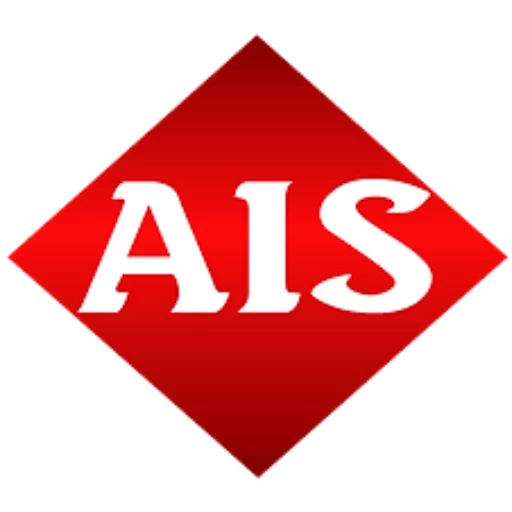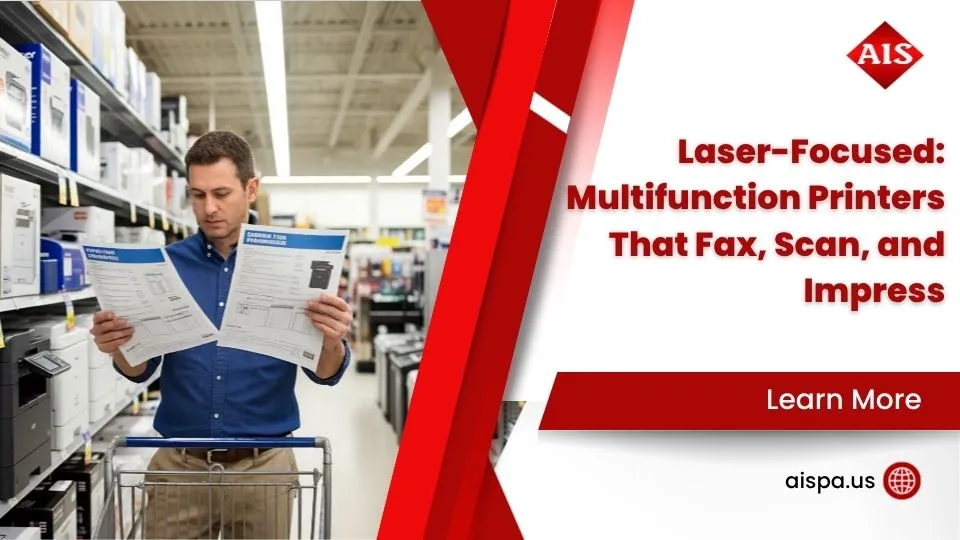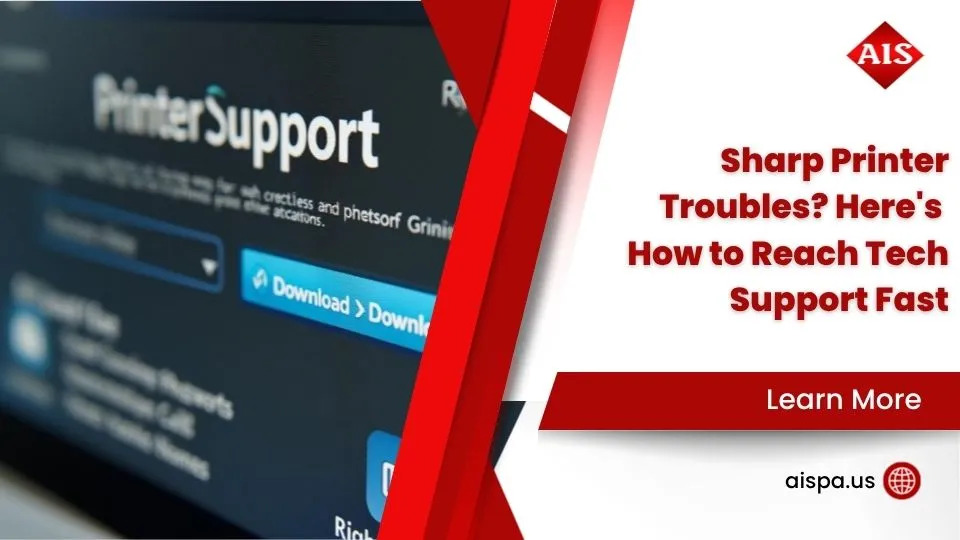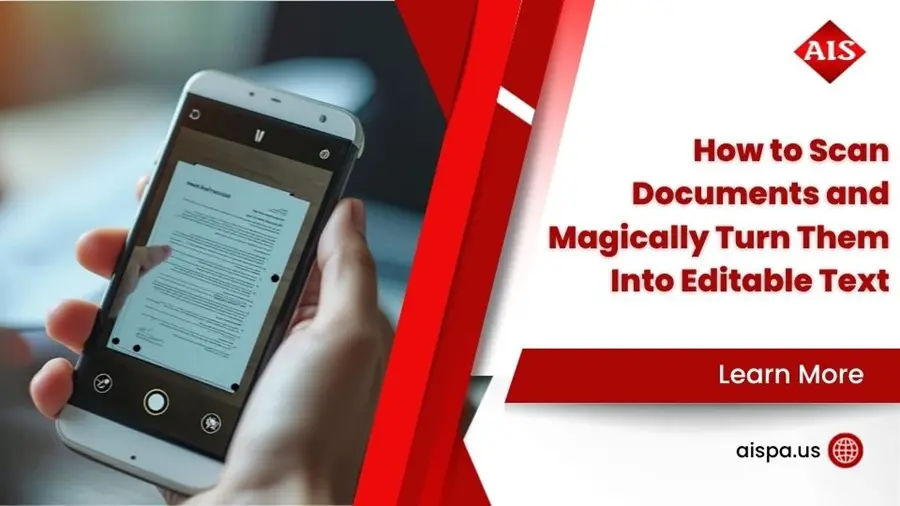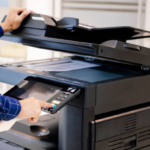An Essential Guide to Comparing Copier and Printer Features
Copiers and printers are the backbone of modern office productivity, but choosing the wrong equipment can cost your business thousands in maintenance, downtime, and inefficiency. With options ranging from basic single-function devices to enterprise-grade multifunction systems, understanding key features helps you make the right investment.
Quick comparison guide for copiers and printers:
| Feature | Small Office (1-10 users) | Medium Business (10-40 users) | Enterprise (40+ users) |
|---|---|---|---|
| Print Volume | Up to 4,000 pages/month | 200-16,000 pages/month | 1,000-150,000+ pages/month |
| Technology | Inkjet or small laser | Laser MFP | High-speed laser MFP |
| Key Features | Wireless, duplex, basic scanning | Advanced scanning, security features | Production finishing, enterprise security |
| Best Option | All-in-one printer | Multifunction copier | Production-grade system |
The average business printer has just 150 pages of input capacity – far below the 250-sheet minimum recommended for company use. Meanwhile, enterprise Xerox machines can print up to 90 pages per minute and handle 150,000 pages monthly.
Modern devices go beyond simple printing. They serve as digital workflow hubs that scan documents to the cloud, integrate with business applications like Salesforce and QuickBooks, and include advanced security features to protect sensitive data.
Whether you’re replacing outdated equipment or scaling your document management capabilities, the right choice depends on your specific volume needs, required features, and growth plans.
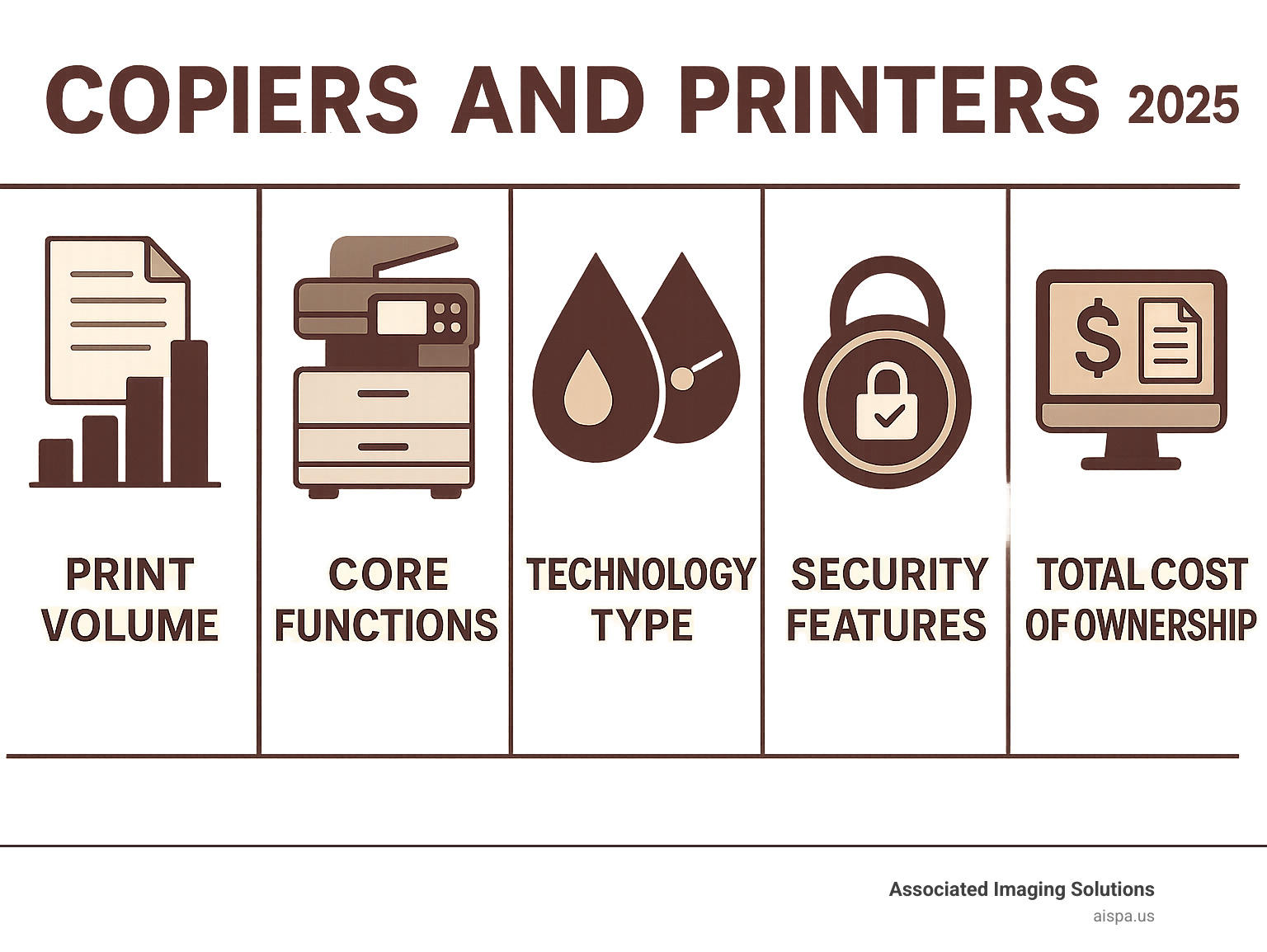
Key copiers and printers vocabulary:
Understanding the Basics: Types of Copiers and Printers
The term copiers and printers covers a wide range of devices designed for specific needs. At its most basic, a single-function printer only prints, making it suitable for a very small home office.
Most businesses, however, require more versatility. This is where All-in-One (AIO) devices and Multifunction Printers (MFPs) come in. While the terms are often used interchangeably, AIOs are typically smaller, consumer-grade devices, whereas MFPs are robust, business-grade machines. Both offer a suite of core functions:
- Print: Produce hard copies of digital documents.
- Scan: Convert physical documents into digital files for storage, email, or workflow integration.
- Copy: Duplicate physical documents directly.
- Fax: Send and receive documents over a telephone line, a function still crucial for some industries.
Our guide on What is an MFP Printer? digs deeper into these versatile machines. Beyond standard office devices, there are specialized machines like production printers for high-volume jobs and wide format printers for large outputs like blueprints and banners. Explore our options in the Large Format Printers Category.
The All-in-One Advantage
Choosing an all-in-one or multifunction device offers significant benefits. First, it’s a space-saving solution. Consolidating all functions into one unit frees up office real estate and reduces clutter.
From a financial perspective, these devices are cost-effective. Purchasing one multifunction device is more affordable than four separate machines, which also translates to lower ongoing costs for supplies and maintenance.
An MFP becomes a centralized document hub, streamlining your workflow by allowing employees to perform multiple tasks at one location. This integration increases productivity and efficiency. The convenience and reduced hardware management make MFPs a smart choice for optimizing business operations.
Specialized and Production Models
While MFPs handle daily office tasks, some businesses have unique needs that demand specialized equipment. This is where production printers and wide format printers shine. They are built for high-volume environments and offer advanced finishing capabilities that standard office MFPs cannot match.
Production printers are designed for rapid, high-quality output, often used for professional marketing materials like brochures and booklets. Their superior speed and color accuracy are ideal for in-house print shops or businesses with extensive printing demands.
Wide format printers specialize in printing on larger media. Whether you need detailed blueprints, eye-catching banners, or large-scale posters, these printers deliver with precision. They are indispensable for architectural firms, graphic design studios, and marketing agencies. For more on heavy-duty printing, see our insights on Industrial Copier Solutions. We can help you find the right equipment for your large-scale projects.
Core Technology Showdown: Laser vs. Inkjet
The core printer decision is laser or inkjet. Understanding their strengths will save you from costly mistakes.
| Feature | Laser Printers | Inkjet Printers |
|---|---|---|
| Speed | Generally faster, especially for text | Slower for text, can be competitive for photos |
| Cost Per Page | Lower, particularly for black-and-white text | Higher, especially for color |
| Upfront Cost | Higher | Lower |
| Best For | Sharp text, line art, high-volume documents | Vibrant colors, photo quality, mixed media |
| Ideal Use Case | Office environments, high-volume text printing | Home use, photo printing, occasional color documents |
Laser technology uses heat to fuse toner (a fine powder) onto paper, while inkjet technology sprays liquid ink cartridges through tiny nozzles. This technical difference dramatically affects what each type does best.
For a deeper dive, check out What is a Laser Printer? and What is an Inkjet Printer?. Our Inkjet vs. Laser Printer comparison is also helpful.
When to Choose a Laser Printer
If your office prints many contracts and reports, laser copiers and printers are your best choice. They’re built for high-volume text printing with impressive speed priority—some models can print 90 pages per minute.
Laser printers produce crisp, professional documents with excellent text sharpness, making them perfect for office environments where first impressions matter.
The key benefit is a lower cost-per-page for black and white printing. While the upfront cost is higher, you’ll save money over time with regular use. Wondering about supplies? How Long Does Printer Toner Last? covers managing toner costs.
One common question is Do Laser Printers Use Ink? The answer is no—they use toner, which lasts longer and produces sharper text.
When an Inkjet Printer is the Right Fit
When you need to print a stunning photo or create marketing materials with rich, vibrant colors, inkjet copiers and printers are ideal. They excel at high-quality color images and photo printing.
The lower initial cost makes inkjets attractive for home office use or small businesses on a budget. They offer incredible versatility, handling both text and high-quality photos.
Inkjets are best for occasional printing needs. If you print sporadically but require excellent color quality, an inkjet provides the flexibility to handle everything from invoices to full-color brochures.
Curious about supply costs? How Many Pages Does an Ink Cartridge Print? breaks down what to expect. While per-page costs are higher than laser, the lower entry price and superior color quality are often worthwhile.
Key Features to Evaluate for Your Business Copiers and Printers
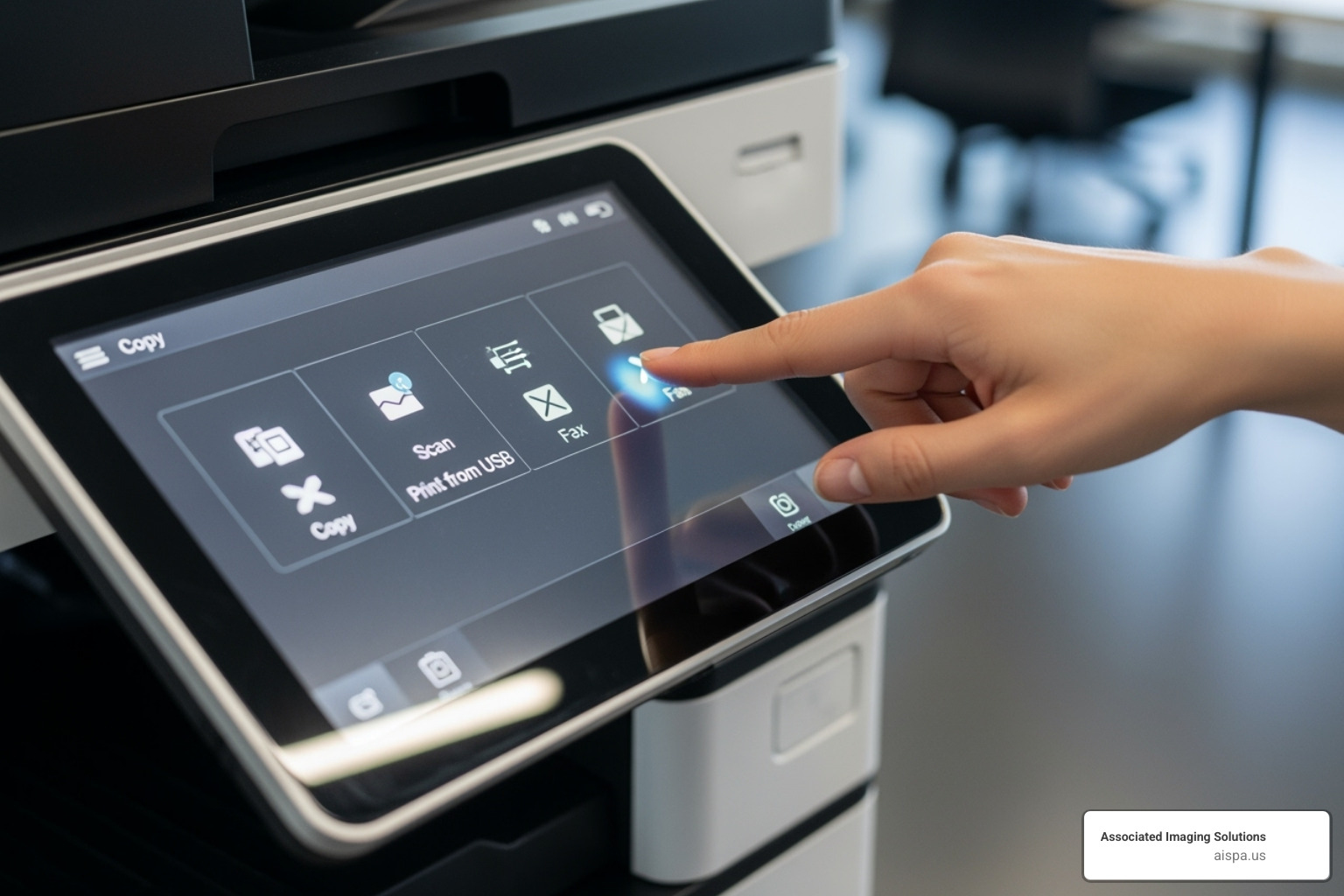
Once you’ve decided on the technology, it’s time to evaluate the features that matter for your daily operations. The features you prioritize will depend on how your business operates, as a law firm’s needs differ greatly from a creative agency’s. Let’s break down the key performance metrics.
Performance and Speed (PPM)
Pages Per Minute (PPM) is a key metric, but it only tells part of the story. A machine with a high PPM is less useful if it takes a long time to warm up and print the first page.
That’s where First Page Out Time (FPOT) becomes crucial. This measures how quickly the first page prints. For busy offices, a low FPOT can be more valuable than raw PPM speed.
High-speed models like our Sharp BP-70M90 Printer can reach print speeds up to 90 ppm, significantly improving office efficiency. The difference between 15 PPM and 45 PPM can turn a productivity roadblock into a quick task.
Print Volume and Duty Cycle
Matching your recommended monthly volume to your actual printing habits is critical. The supported ranges—200 to 150,000+ pages per month—represent real engineering limits.
Think of maximum duty cycle as a redline. Pushing a printer to its maximum regularly leads to more repairs. Smart businesses choose machines where their typical volume is well within the recommended range, allowing for busy months and scalability for growth.
Planning ahead saves headaches. Our guide on How to Choose an Office Copy Machine walks through this calculation in detail.
Color vs. Monochrome
The color vs. monochrome decision depends on whether your printed materials need to impress. Black and white printing is cost-effective for internal documents, but full-color capabilities are vital for client-facing proposals.
The cost of color toner is significantly higher. Understanding What Does CMYK Stand For? explains why, as you’re using four toners instead of one.
Many businesses use a hybrid approach: monochrome machines for internal reports and a quality color device like the Sharp BP-70C65 Printer for marketing materials. This maximizes both cost efficiency and professional impact.
Paper Handling and Finishing
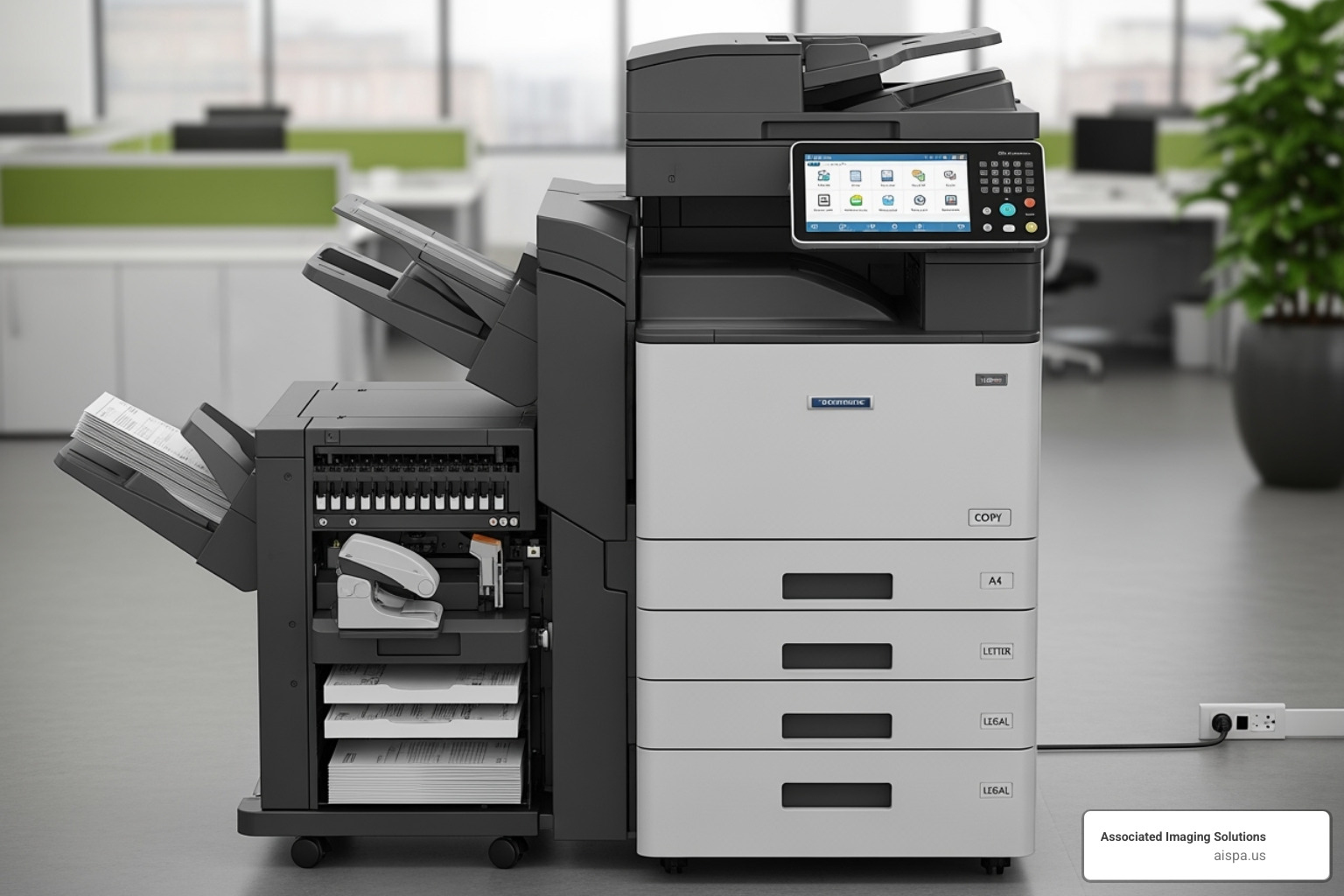
Paper handling is critical for productivity. The 250-sheet minimum input capacity is based on typical office use; smaller trays cause constant interruptions for refilling.
Optional trays are a worthwhile investment for handling different paper types without swapping. The Automatic Document Feeder (ADF) makes scanning and copying multi-page documents a load-and-go convenience.
Duplex printing is essential, cutting paper costs in half and creating more professional, manageable documents.
Advanced finishing options like stapling, hole-punching, and booklet making eliminate manual post-printing tasks, turning a multi-step process into a smooth, automated workflow.
Understanding Types of Paper for Printing helps prevent jams, but we also have tips for Solving Printer Jams when they inevitably occur.
Modern Office Integration: Connectivity and Security
Today’s copiers and printers are smart, connected hubs that drive office workflow. They are packed with intelligent features that automate tasks, protect sensitive data, and make work easier. Modern office equipment does more than print; it connects, thinks, and protects your business.
Digital Workflows and Connectivity for modern copiers and printers

Mobile printing is now essential. You can send documents to print from your phone whether you’re in a meeting or on the go. Our guide on How to Print From Your Phone walks you through it.
Cloud integration is another key feature. Your copiers and printers can scan documents directly to cloud services like Google Drive or Dropbox. This means a scanned contract can instantly appear in a shared folder. You can also pull documents from the cloud to print without a computer.
Most business devices offer both Wi-Fi connectivity for flexibility and Ethernet ports for reliability. A wired connection keeps critical printing running even if Wi-Fi is down. Behind the scenes, printer drivers are essential for communication between your computer and device.
Essential Security Features for Business Copiers and Printers
Your office printer can be a network security risk. Modern copiers and printers store and handle sensitive data, making security features absolutely critical.
User authentication via PIN, swipe card, or fingerprint scan ensures only authorized people can access device functions. This prevents unauthorized printing, scanning, or copying.
Secure print release holds a document in the printer’s memory until you authenticate at the device. This prevents confidential reports from being left on the output tray.
Data encryption protects information on the device and across your network. Network firewalls, regular firmware updates, and access control features provide further layers of security, allowing IT to manage who can use specific functions.
Also, learn to spot Toner Scam Warning Signs to protect against fraudulent supply orders.
User Experience and Management
Great features are useless if the device is frustrating. Modern copiers and printers use intuitive touchscreen interfaces that are simple and responsive, much like a tablet.
Remote management tools allow IT departments to monitor and manage entire fleets from their desks, checking toner levels or troubleshooting problems. Some systems even offer automated supply ordering. When toner is low, the machine orders more automatically.
Our guide on How to Replace a Printer Cartridge simplifies supply replacement. For larger offices, printer pooling distributes jobs across multiple devices to reduce wait times. Learn more about What is Printer Pooling? to see if it can help your workflow.
Managing these features can be complex, which is why many businesses partner with experts. Choosing a Print Management Company can help you focus on your business while professionals handle the technical details.
Making the Right Choice: Leasing vs. Buying
When you’re ready to invest in copiers and printers, you face a crucial decision: lease or buy? This choice impacts your financial planning, operations, and how you handle technology upgrades.
Understanding the Total Cost of Ownership (TCO) is essential. This isn’t just the upfront price; it includes supplies, maintenance, and repairs. TCO reveals the true lifetime cost of your copiers and printers. For a comprehensive breakdown, our guide on the Cost of a Copy Machine walks you through the numbers.
There’s no one-size-fits-all answer. Your choice depends on your cash flow, print volume, and whether you prefer predictable monthly expenses or owning your equipment outright.
The Case for Leasing
Leasing copiers and printers is popular for its flexibility and financial predictability.
The most obvious benefit is the lower upfront cost. You spread the investment across predictable monthly payments, freeing up cash for other business needs.
What makes leasing especially attractive is the included maintenance and service. When a printer fails, you won’t scramble for a technician. Most lease agreements cover parts, labor, and often toner, providing a worry-free experience.
The easy upgrades aspect is another game-changer. Technology moves fast. Leasing lets you regularly refresh your equipment, ensuring you always have access to newer technology with the latest security and efficiency features. At the end of your lease term, you simply upgrade to the newest model.
This flexibility is valuable for growing businesses. Our guide on What to Look For When Leasing a Copier can help you steer the process.
The Case for Buying
While leasing offers flexibility, buying copiers and printers can be the smarter financial move for businesses with stable, long-term needs and sufficient capital.
Full ownership means the device is yours. You have complete control over its use and service. After the initial investment, you have no more monthly payments.
For businesses planning to use the same equipment for many years, this can result in significant long-term cost savings for stable needs.
Buying also eliminates page-count limits. Many lease agreements include monthly page allowances with overage fees. When you own your equipment, you can print as much as you need without this concern.
This approach works well for businesses with very high and consistent print volumes over many years. If purchasing sounds right for you, we offer a range of Commercial Printers for Sale. The key is to honestly assess your financial situation, print volume, and long-term strategy.
Conclusion: Finding Your Perfect Office Partner
Choosing the right copiers and printers doesn’t have to feel like solving a puzzle. By following a systematic approach, you’ll find equipment that truly serves your business for years to come.
Start with an honest needs assessment. How many pages does your team print each month? Do you need basic black-and-white documents, or are colorful marketing materials part of your daily workflow? Understanding your volume and output requirements forms the foundation of every good decision.
Next comes feature evaluation – the fun part where you get to explore what modern machines can do. Maybe you need lightning-fast speeds for a busy reception area, or perhaps advanced finishing options that can staple and hole-punch reports automatically. Some businesses find they need robust security features, while others prioritize mobile printing capabilities that let everyone print from their phones.
The technology choice between laser and inkjet often becomes clear once you know your primary needs. Laser excels at crisp text and high-volume efficiency, while inkjet shines for vibrant photos and occasional color documents. Neither choice is wrong – it’s all about matching the technology to your specific requirements.
Your financial model – whether to lease or buy – depends on your cash flow preferences and how you like to manage technology updates. Leasing offers predictable monthly payments and easy upgrades, while buying provides full ownership and long-term savings for stable operations.
Making an informed decision about your copiers and printers sets your business up for smoother operations and happier employees. Nobody wants to deal with paper jams during a deadline crunch or run out of toner right before an important presentation.
At Associated Imaging Solutions, we understand that every Philadelphia business has unique needs. We combine local expertise with cutting-edge technology, offering personalized service that goes beyond just selling equipment. Our team provides expert guidance throughout the entire process, from initial consultation through ongoing support.
Whether you need a simple desktop printer for a small office or a high-volume production system for enterprise operations, we’re here to help you find your perfect office partner.
Explore our complete range of copiers and printers to find the perfect match for your business.
